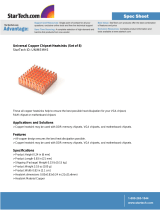
5
1.2 Specifications
Platform: Micro ATX Form Factor: 9.6-in x 8.4-in, 24.4 cm x 21.3 cm
CPU: Socket 478 for Intel
®
Pentium
®
4
/ Celeron
®
processor
Chipsets: North Bridge:
SiS 661FX chipset, FSB @ 800/533/400MHz,
supports Hyper-Threading Technology
South Bridge:
SiS 963L chipset, supports USB 2.0, ATA 133
VGA: SiS Real256E, 32MB-64MB VRAM (share memory)
Memory: 3 DDR DIMM slots: DDR1, DDR2, and DDR3
PC2100 (DDR266) for 3 DDR DIMM slots, Max. 3GB;
PC2700 (DDR333) for 2 DDR DIMM slots, Max. 2GB;
PC3200 (DDR400) for 1 DDR DIMM slots, Max. 1GB
IDE: IDE1: ATA 133 / Ultra DMA Mode 6;
IDE2: ATA 133 / Ultra DMA Mode 6;
Supports up to 4 IDE devices
Floppy Port: Supports up to 2 floppy disk drives
Audio: 5.1 channels AC’97 Audio
LAN: Speed: 802.3u (10/100 Ethernet), supports Wake-On-LAN
Hardware Monitor: CPU temperature sensing (ASRock U-COP);
Chassis temperature sensing;
CPU overheat shutdown to protect CPU life (ASRock U-COP)
(see CAUTION 1);
CPU fan tachometer; Chassis fan tachometer;
Voltage monitoring: +12V, +5V, +3V, Vcore
PCI slots: 3 slots with PCI Specification 2.2
AGP slot: 1 AGP slot, AGP 3.5 compliant,
supports 1.5V, 8X / 4X AGP card (see CAUTION 2)
AMR slot: 1 slot, supports ASRock MR card (Optional)
USB 2.0: 6 USB 2.0 ports:
includes 4 default USB 2.0 ports on the rear panel,
plus one header to support 2 additional USB 2.0 ports
(see CAUTION 3)
ASRock I/O
TM
: 1 PS/2 keyboard port, 1 PS/2 mouse port;
1 VGA port; 1 parallel port: ECP/EPP support;
1 RJ 45 port; 4 default USB 2.0 ports;
Audio Jack: Line Out / Line In / Microphone + Game port





















